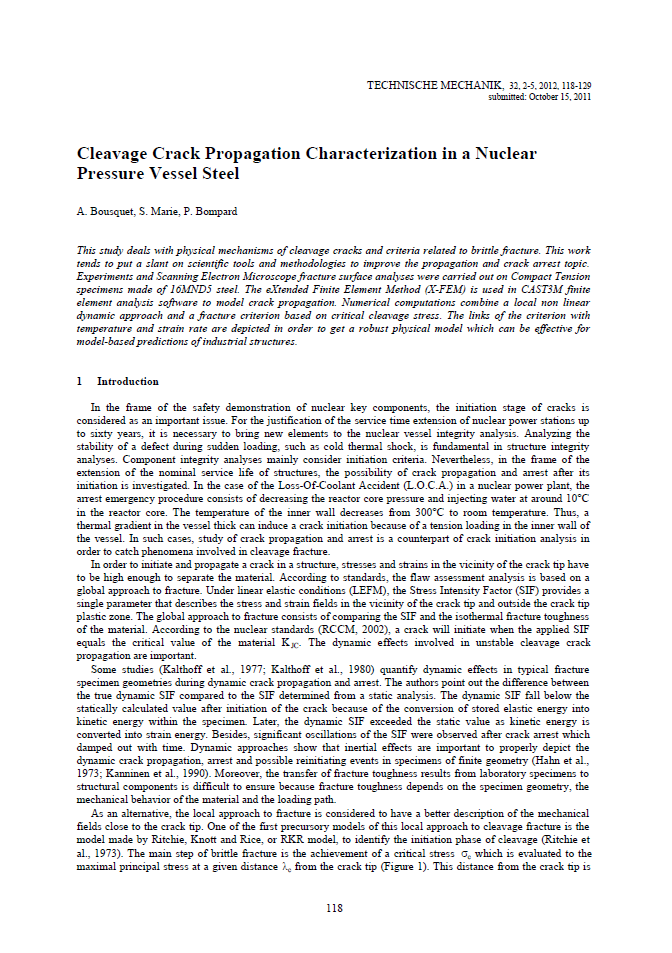Cleavage Crack Propagation Characterization in a Nuclear Pressure Vessel Steel
Abstract
This study deals with physical mechanisms of cleavage cracks and criteria related to brittle fracture. This work tends to put a slant on scientific tools and methodologies to improve the propagation and crack arrest topic. Experiments and Scanning Electron Microscope fracture surface analyses were carried out on Compact Tension specimens made of 16MND5 steel. The eXtended Finite Element Method (X-FEM) is used in CAST3M finite element analysis software to model crack propagation. Numerical computations combine a local non linear dynamic approach and a fracture criterion based on critical cleavage stress. The links of the criterion with temperature and strain rate are depicted in order to get a robust physical model which can be effective for model-based predictions of industrial structures.





